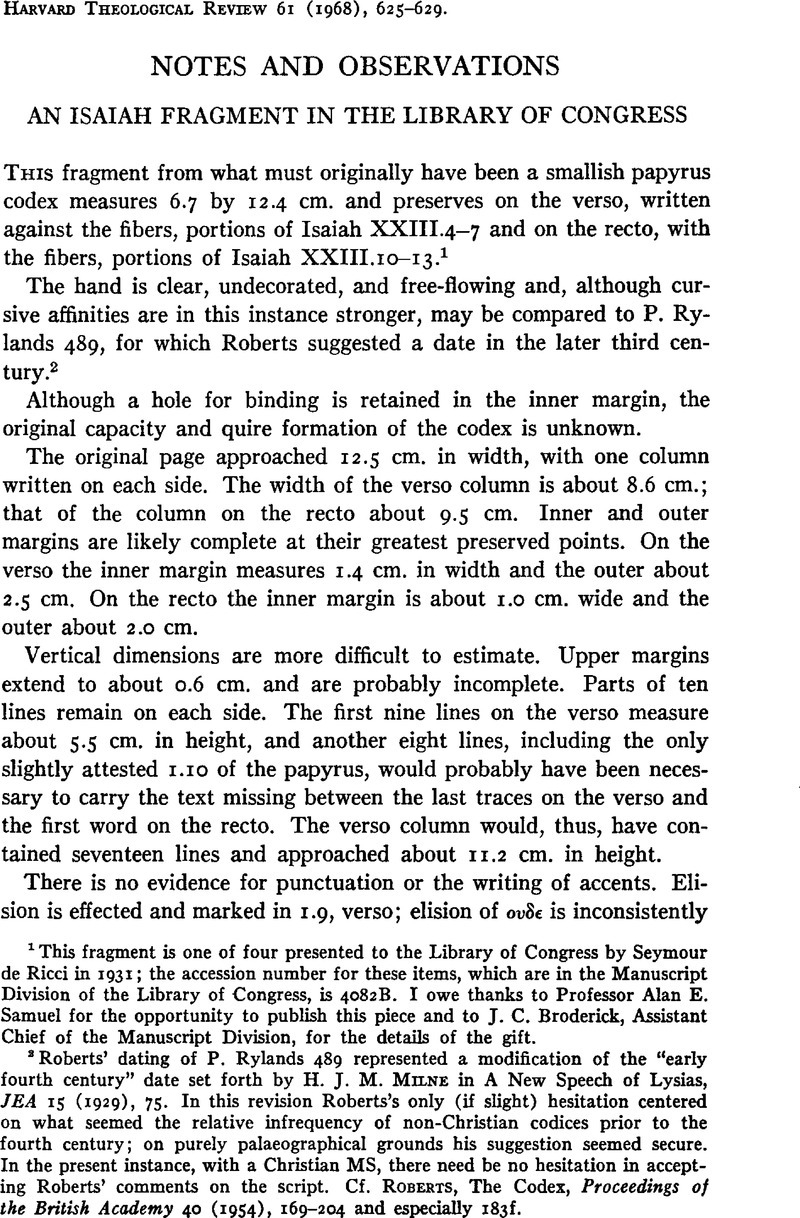No CrossRef data available.
Article contents
An Isaiah Fragment in the Library of Congress
Published online by Cambridge University Press: 10 June 2011
Abstract

- Type
- Notes And Observations
- Information
- Copyright
- Copyright © President and Fellows of Harvard College 1968
References
1 This fragment is one of four presented to the Library of Congress by Seymour de Ricci in 1931; the accession number for these items, which are in the Manuscript Division of the Library of Congress, is 4082B. I owe thanks to Professor Alan E. Samuel for the opportunity to publish this piece and to J. C. Broderick, Assistant Chief of the Manuscript Division, for the details of the gift.
2 Roberts' dating of P. Rylands 489 represented a modification of the “early fourth century” date set forth by Milne, H. J. M. in A New Speech of Lysias, JEA 15 (1929), 75Google Scholar. In this revision Roberts's only (if slight) hesitation centered on what seemed the relative infrequency of non-Christian codices prior to the fourth century; on purely palaeographical grounds his suggestion seemed secure. In the present instance, with a Christian MS, there need be no hesitation in accepting Roberts' comments on the script. Cf. Roberts, , The Codex, Proceedings of the British Academy 40 (1954), 169–204Google Scholar and especially 183f.
3 Ziegler, , Septuaginta: Isaias (Göttingen, 1939), 98fGoogle Scholar.
4 Cf. ἐνοικεῖν and κατοικεῖν in Hatch, and Redpath, , A Concordance to the Septuagint, I (Oxford, 1897)Google Scholar.


